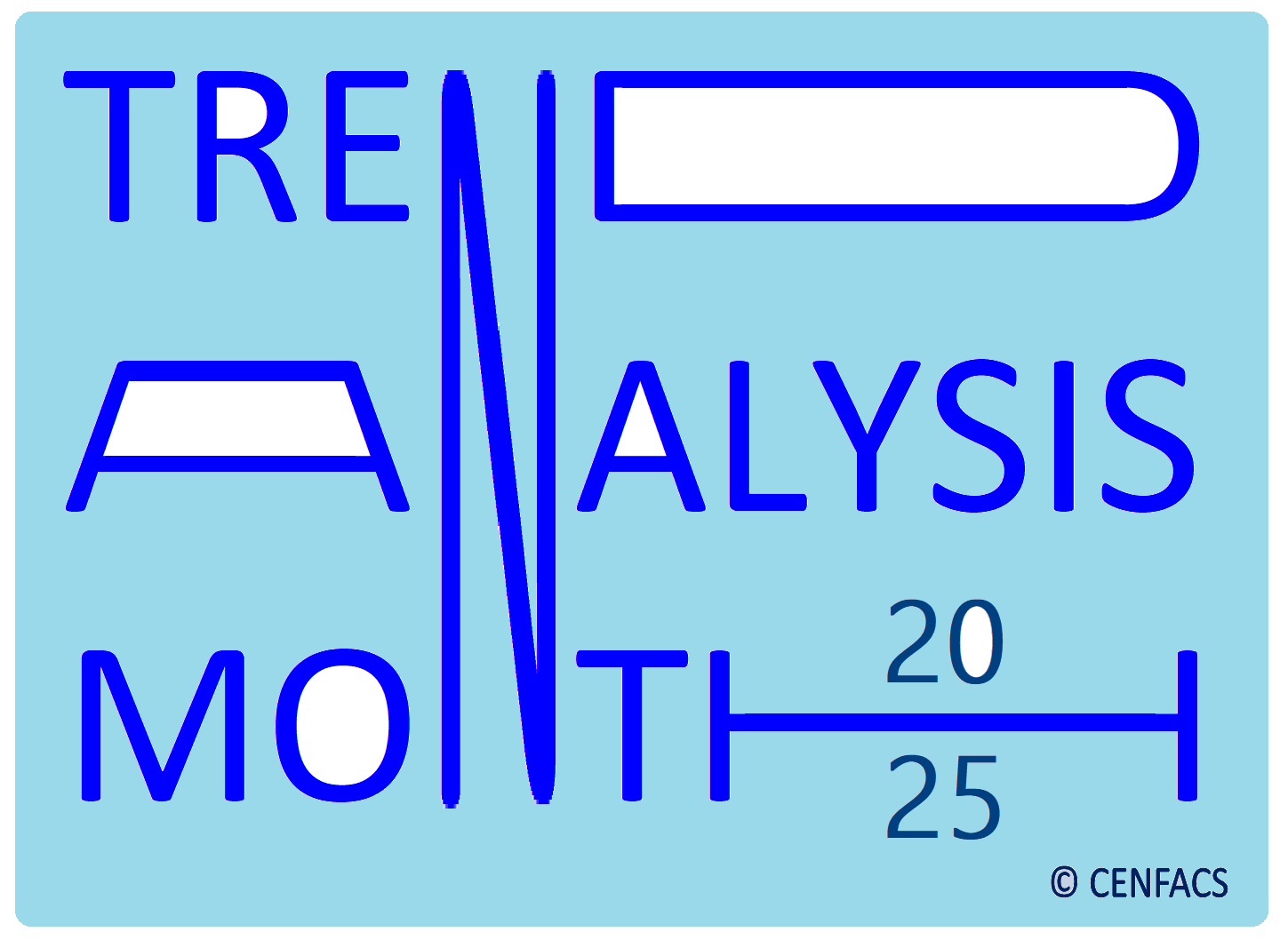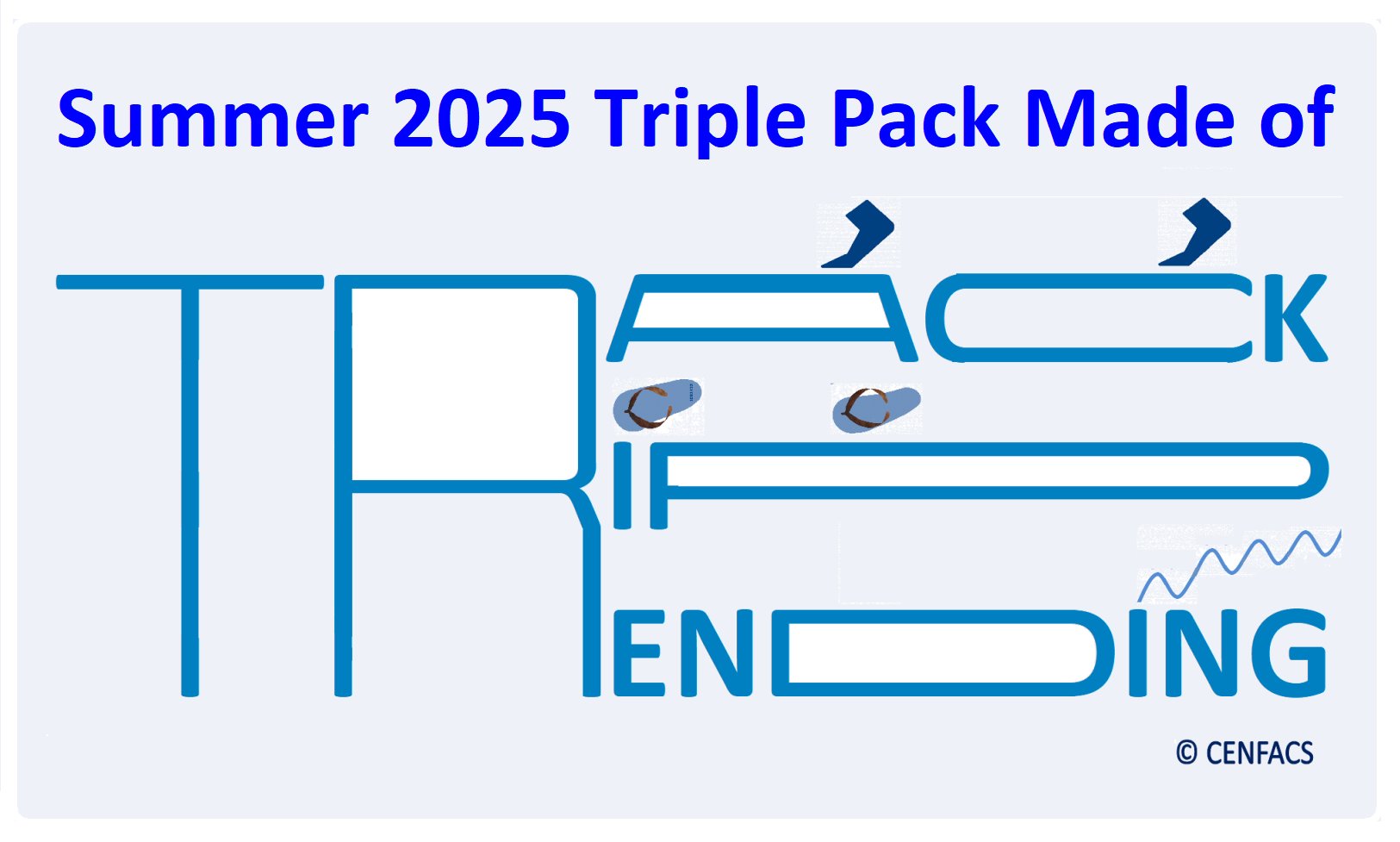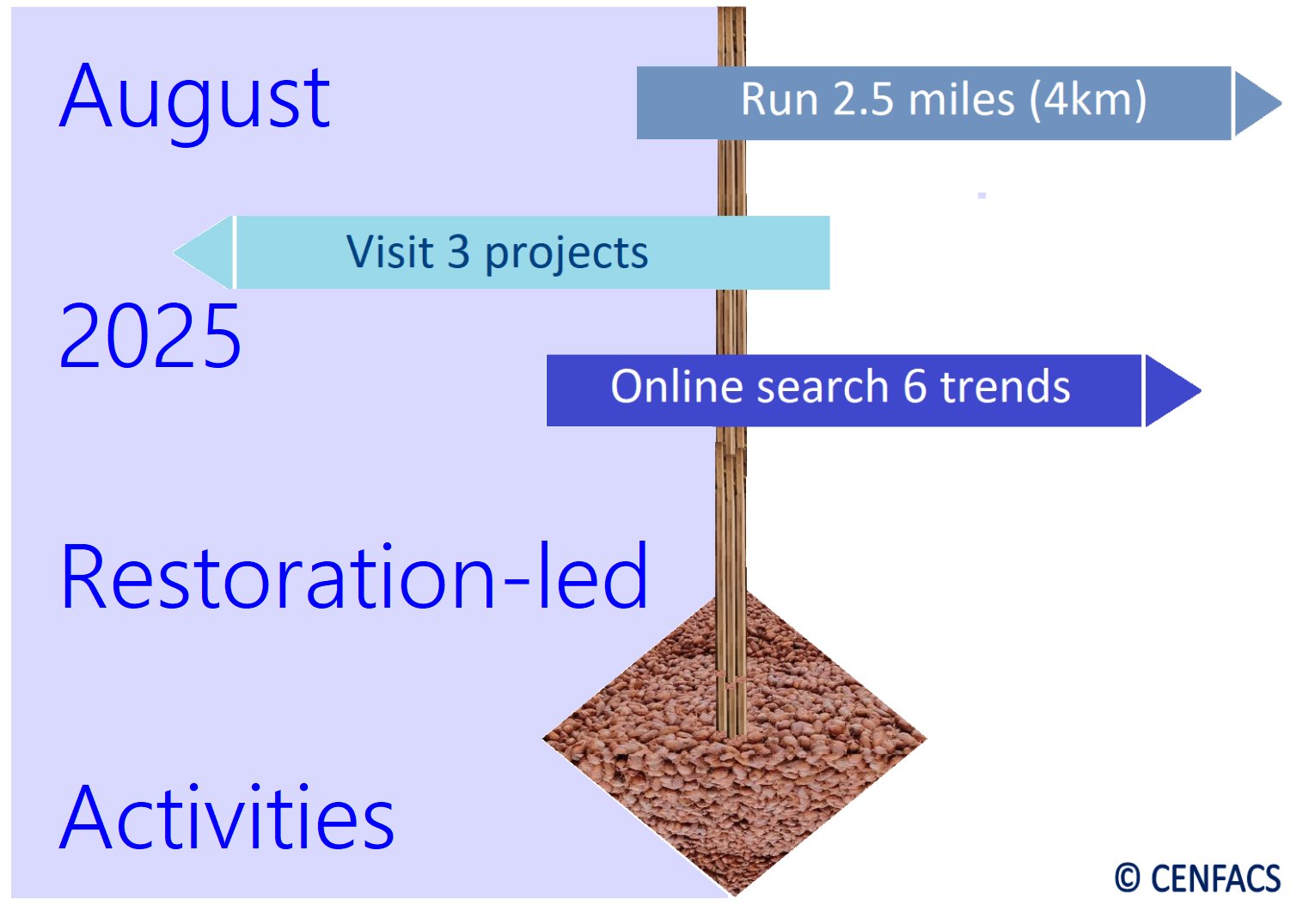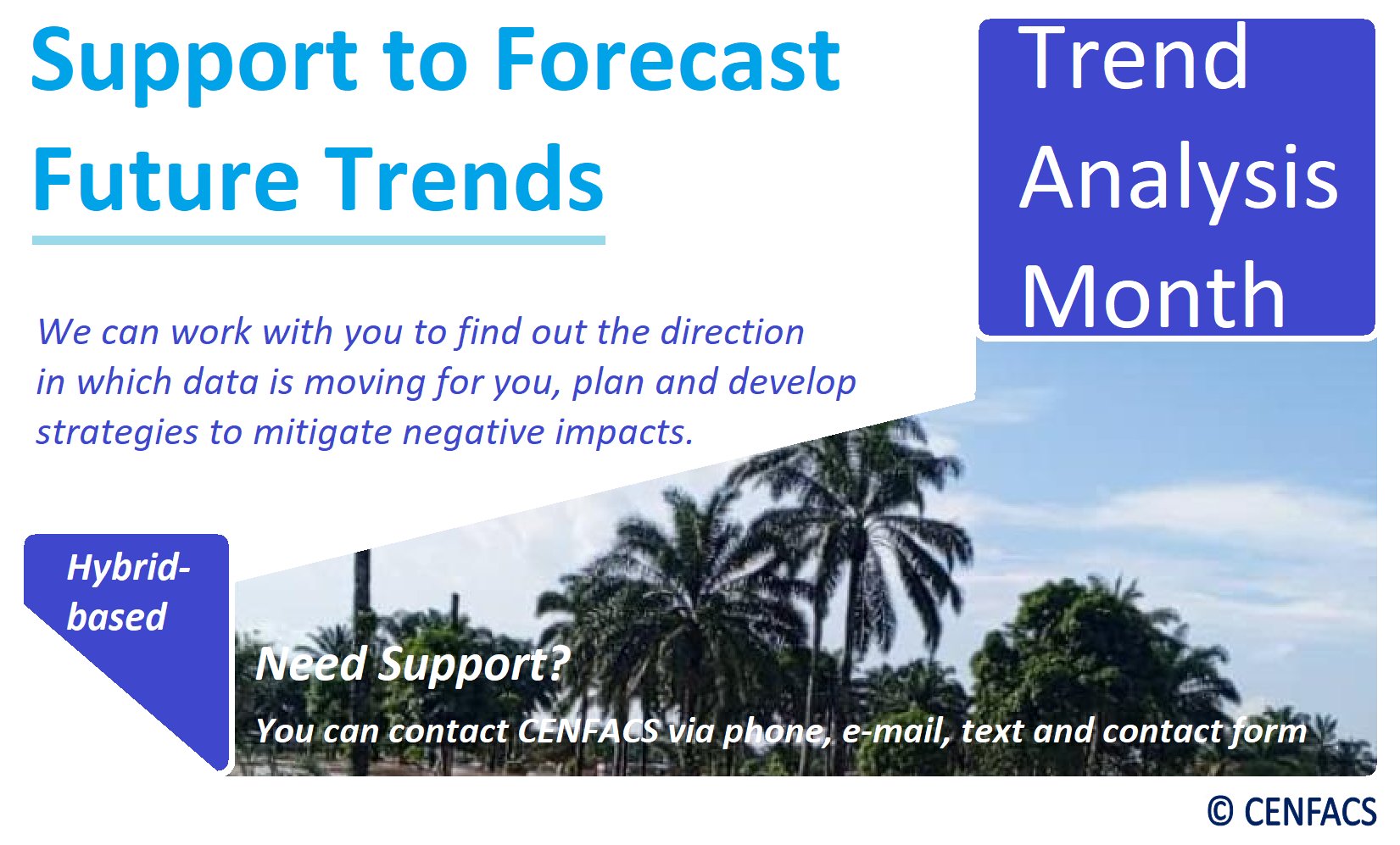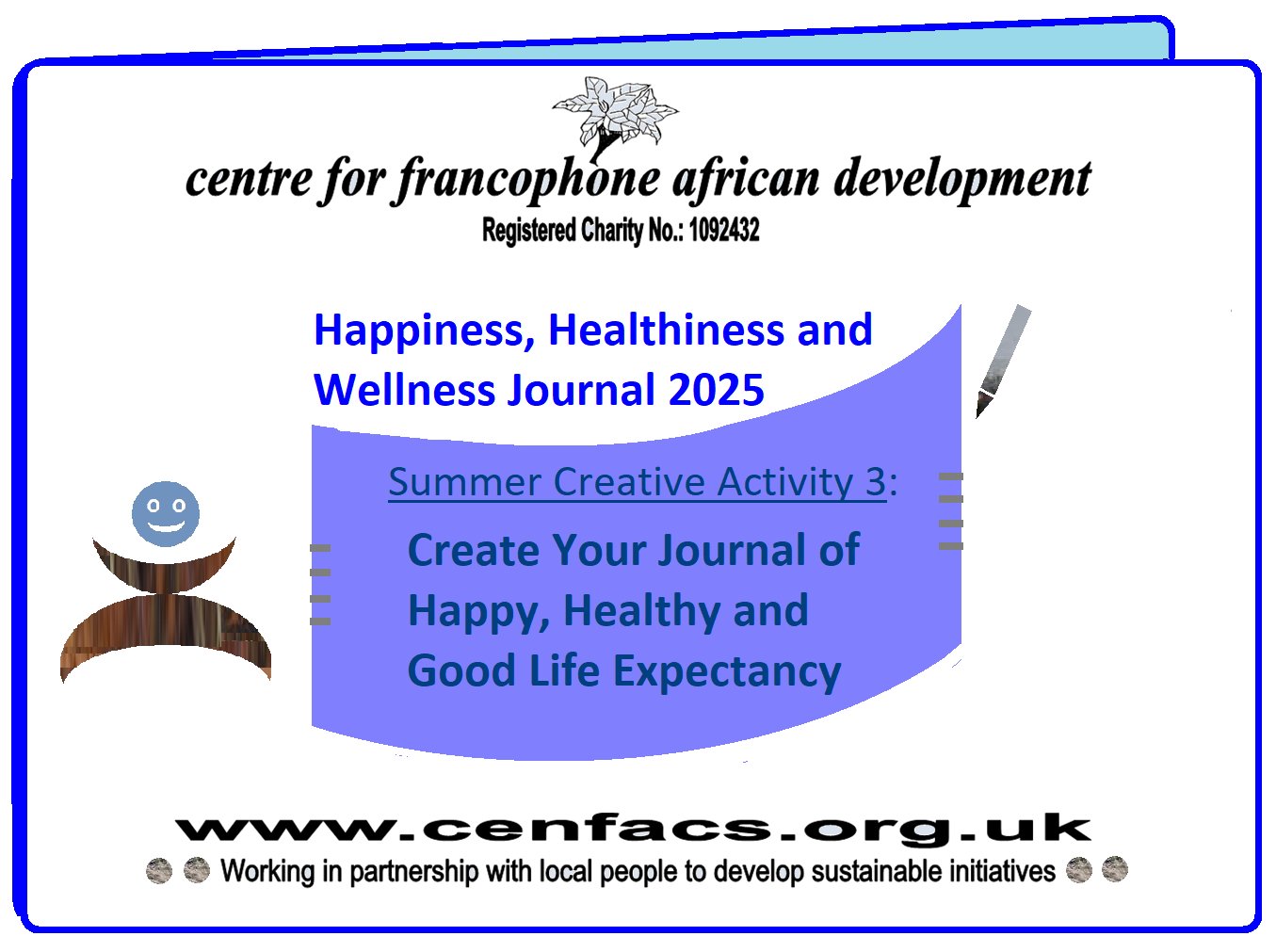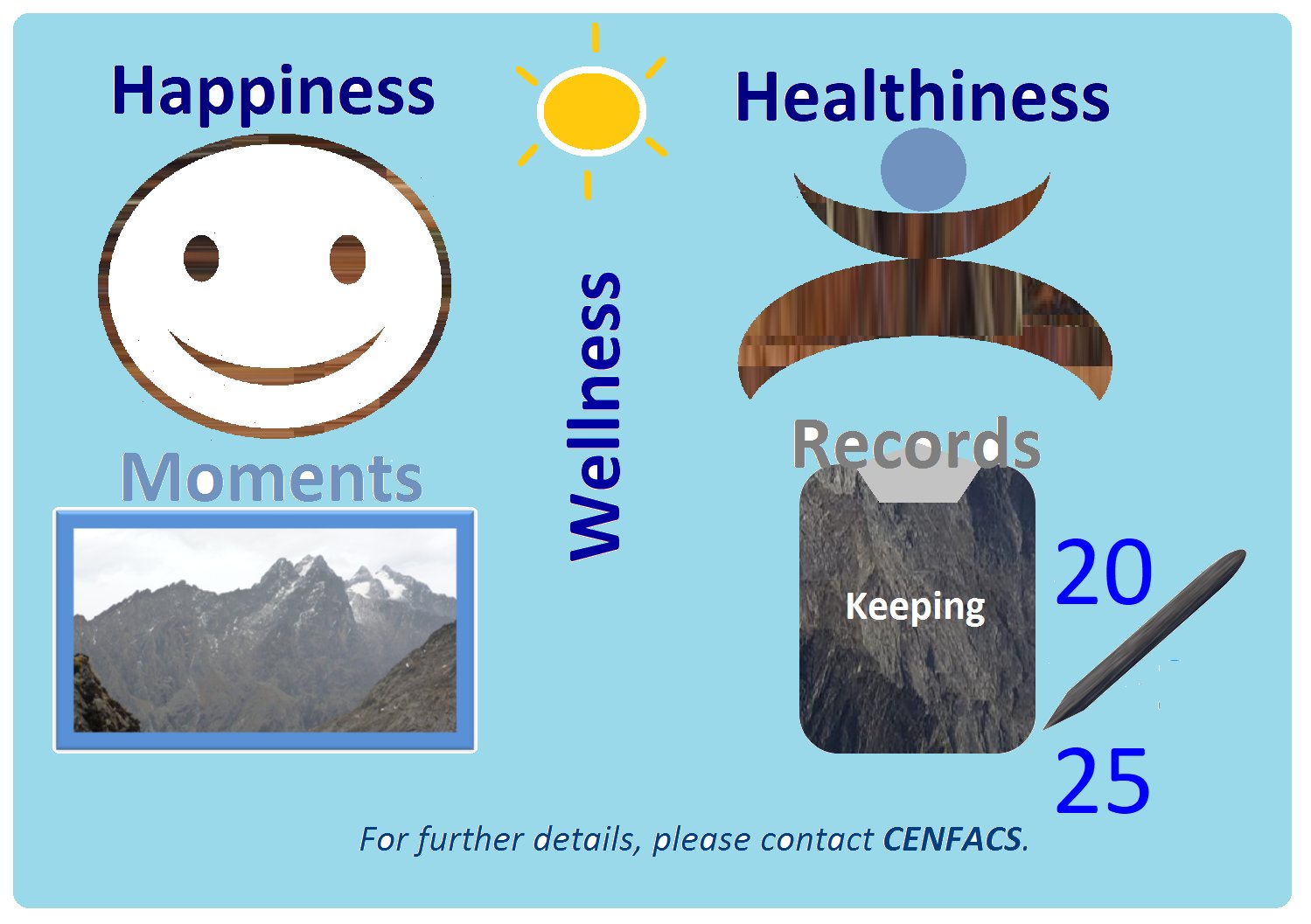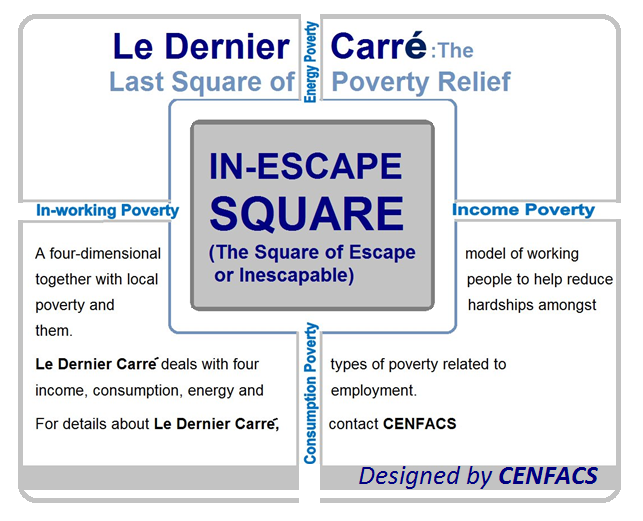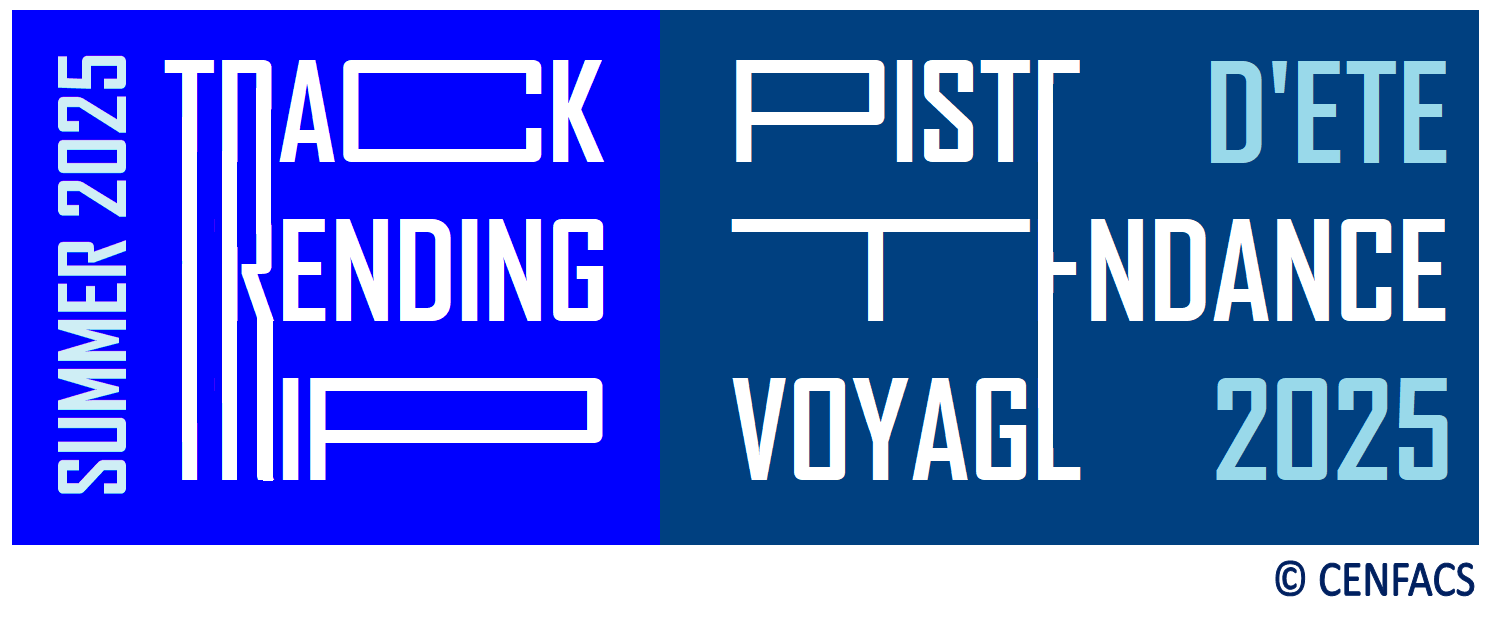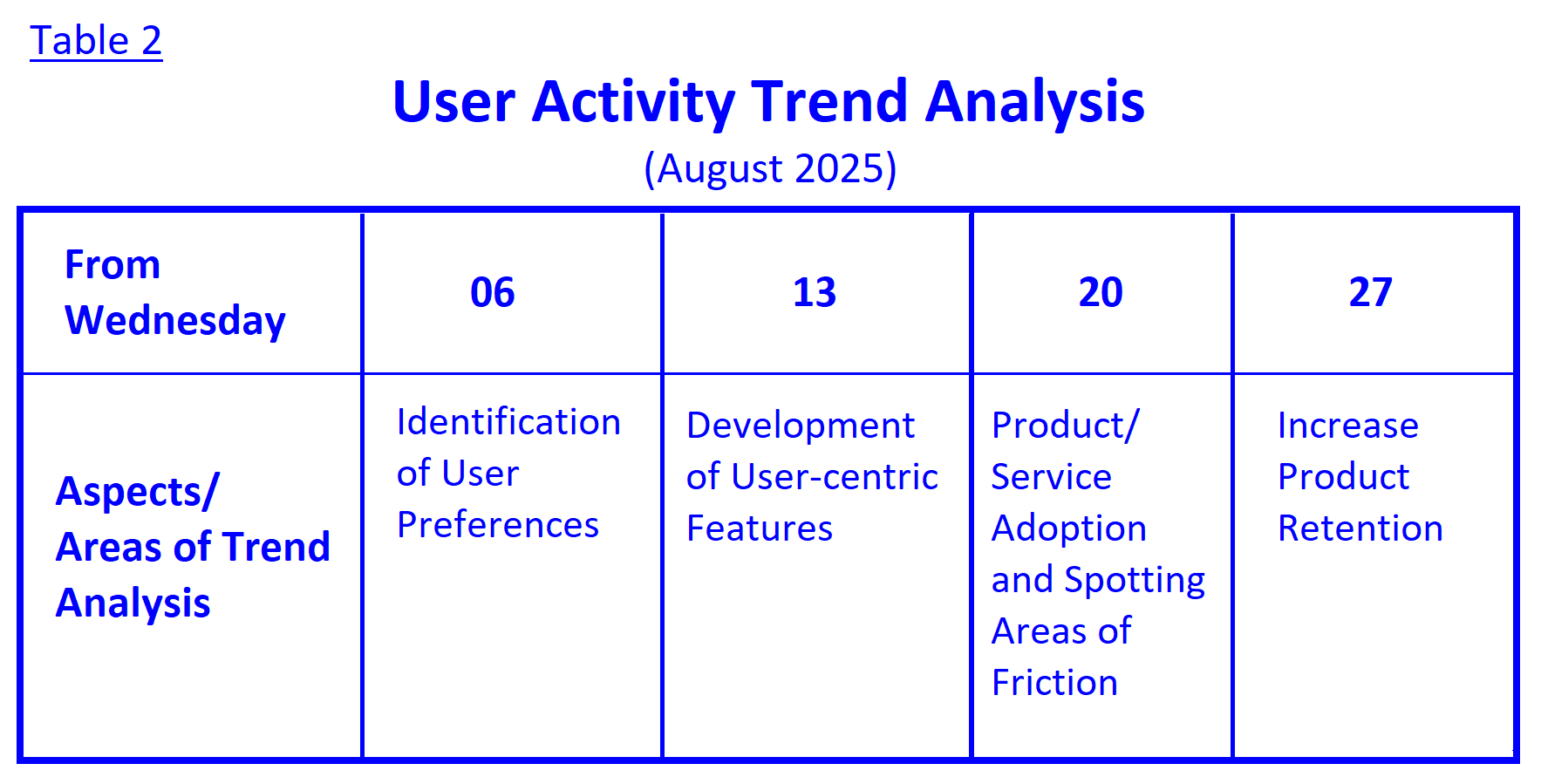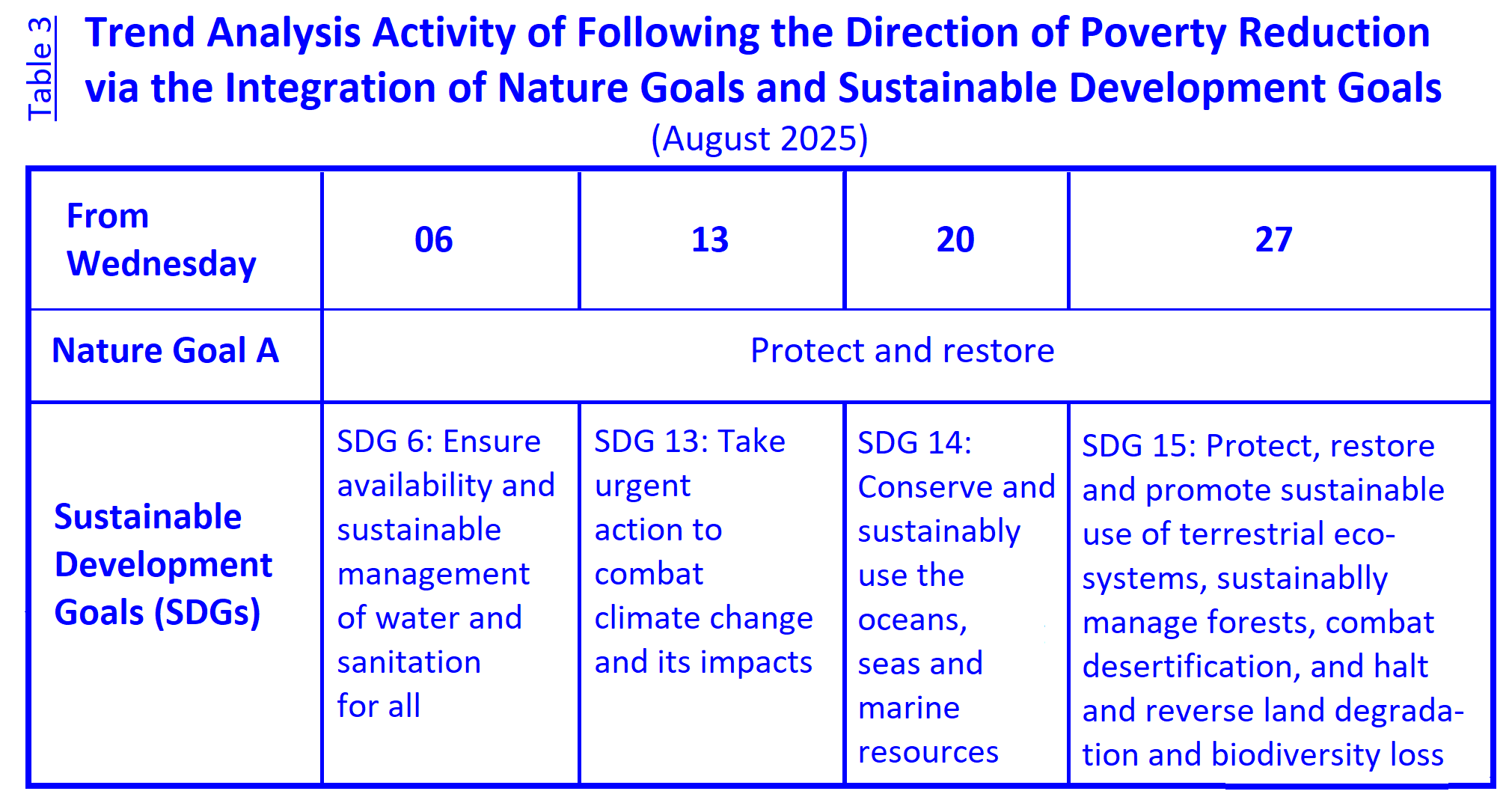Welcome to CENFACS’ Online Diary!
06 August 2025
Post No. 416
The Week’s Contents
• Trend Analysis Month with Summer 2025 Triple Pack Made of Track, Trending and Trip
• Activity/Task 8 of the Restoration (‘R’) Year and Project: Run or Walk with or Visit the People in Need of Restoration
• Goal of the Month: Analyse Poverty Trends
… And much more!
Key Messages
• Trend Analysis Month with Summer 2025 Triple Pack Made of Track, Trending and Trip
Last month, we carried out the analytics or historical analysis of the programmes, projects and activities we ran during the financial year 2024-2025. This analytics was a broad focus on using data to gain insights into these programmes, projects and activities. We also had a specific implementation of analytics and impact which applied to CENFACS.
Having this historical analysis in our mind set, we can now start looking at patterns and highlights. To do that, we are going to approach August month as a Trend Analysis Month or of Triple Pack Made of Track, Trend and Trip.
Regarding trend analysis itself, we are going to focus on three areas:
a) Trend Analysis for CENFACS as a charity
b) User Activity Trend Analysis
c) Trend Analysis of the Poverty Reduction Market by following the Direction of Poverty Reduction via the joint effect resulting from the integration of nature and sustainable development goals.
• • August as a Trend Analysis Month
After dealing with the Impact Analytics and Data Insights for the 2024-2025 Programmes, Projects and Activities in July 2025; we are now undertaking Trend Analysis this August 2025. This is because August is the month we conduct trend analysis on our work. In other words, we are statistically using techniques to identify and analyse patterns or trends in data over 2024-2025 and behind. We are examining historical data to uncover insights into past trends and predict future developments. We are now using and will be using the results of the 2024-2025 Impact Analytics and Data Insights to carry out Trend Analysis.
Trend Analysis has to be understood and defined in a technical way. Trend analysis can be approached in many ways. One of its approaches comes from ‘ideascale.com’ (1) which defines it as
“A statistical and analytical technique used to evaluate and identify patterns, trends, or changes in data over time. It involves the examination of historical data to uncover insights into the direction or tendencies of a particular phenomenon”.
By referring to this definition, we are going to systematically examine historical data to identify patterns, tendencies, or changes over 2024-2025 and the previous financial years. Using the key performance indicators or trend analysis metrics, CENFACS trend analysts are going to capture the essence of the trends they are investigating.
• • August as the Month of Focus on Track, Trending and Trip
August is also the month we focus on CENFACS’ Track, Trending and Trip. What do we mean by that? We mean that we are on the track of poverty reduction, we walk to meet those in need and we follow the direction of poverty reduction. Let us briefly explain these key concepts or activities of the month making our triple pack (i.e., track, trending and trip).
• • • On the Track of Poverty Reduction
We are on the Track of poverty reduction as we are looking for relief for ourselves and other people. We do Track at CENFACS as we think that every one of us can undertake basic physical activity of running or racing to help reduce poverty. In this process of tracking, we also try to reduce or eliminate poverty due to being on the wrong side of the tracks.
To basically run or race, one does not need to be part of field event. For those who cannot in-person run, they can do it virtually or online. Our project known as Run to Reduce Poverty is designed to meet that end.
This Summer, we are going to do Tracking while taking into account the treble context of the lingering impacts of the cost of living crisis, extreme temperatures and the damaging effects of the other polycrises.
• • • Trips or Walks to CENFACS’ Projects
August is also the month during which we carry out some Trips to our projects. We visit our projects all over the year, but August is the time we highlight this. We do a short journey to one of the places in need. It is the month of the year we walk again and reach out to the need, to the people, communities, organisations and livelihoods in need.
This Summer, we are going to undertake both Virtual or In-person Trips depending on the circumstances prone to the rising costs of living, changing climate and lingering effects of the other polycrises. We can work alone or use our social network or social wayfinding or even social trail.
• • • Trendy Development
We thirdly deal with Trending in August as we spend time looking at what is popular at CENFACS in the context of poverty reduction as well as what is the current general movement or tendency in poverty reduction. This is what we can call Trendy Development; that is a development process following the latest fashions in terms of poverty reduction.
• • • • Trending in Poverty Reduction
Trending in Poverty Reduction helps us to follow the direction of poverty reduction. This August we are going to follow this direction or tendency of poverty (or poverty reduction) via the integration of nature goals and sustainable development goals. Through this integration process, we are going to find out how this integration helps people to transition out and away from poverty.
Indeed, pursuing nature goals alone can help people to come out poverty. Similarly, applying sustainable development goals can assist people in moving out of poverty. Integrating both nature goals and sustainable development goals can even better enable people to move out of poverty, because the joint effect of the two types of goals.
Besides this Trend Analysis of the Poverty Reduction Market by following the Direction of Poverty Reduction, we shall have two more trend analysis: Trend Analysis for CENFACS as a Charity and User Activity Trend Analysis.
• • • • Trend Analysis for CENFACS as a Charity
This second trend analysis will involve identify patterns and shifts in data to understand how CENFACS can better achieve its charity objects and mission, adapt to changing environments, and improve its impact.
• • • • User Activity Trend Analysis
Needs, preferences and buying habits can change over time. We cannot assume that because we have been offering services to the community, our beneficiary/user needs will be always the same. This is why we need to conduct user activity trend analysis.
User Activity Trend Analysis will be about tracking user interactions with CENFACS services and analysing trends in user activity to make data-driven informed decisions. It is also about understanding past trends and anticipating future developments.
The above-mentioned trend analysis activities will help in generating a trend analysis report which will further up CENFACS poverty reduction work.
More details about Trend Analysis Month and CENFACS’ Track, Trending and Trips for this year are given under the Main Development section of this post.
• Activity/Task 8 of the Restoration (‘R’) Year and Project: Run or Walk with or Visit the People in Need of Restoration
Our series or set of interconnected tasks or activities planned for the execution of CENFACS‘ dedication of year 2025 as of Restoration continues with the eighth activity/task. In this eighth activity or task, we are going to reach restoration goal with those in need.
• • Reaching Restoration Goals with Those in Need
People, particularly those living in poverty, may have a need to restore their lives or things in their lives. They may not know which steps to take or simply what to do. One may try to run or walk with or visit them to find out the steps they can take to address the issues they face and place themselves in a position to success in their restoration drive.
For instance, one can analyse their demand for eco-friendly restoration practices or recycled materials or energy-efficient systems. Likewise, one can try to find out the impact of Artificial Intelligence technology in their restoration steps and work with them to develop a plan to adopt this new technology and help them in their restoration needs.
Alternatively, one can in-person visit the people in need and try to discover the barriers to restoration they are facing and discuss with them the types of solutions they would like to be put in place.
Briefly, one can Run or Walk with or Visit the People in Need of Restoration.
The following examples can help illustrate these activities.
• • Examples of August 2025 Restoration Activities
To put into practice CENFACS’ Restoration Year and Project and of the month of Track, Trip and Trend; one can proceed with either of the following Restoration Activities:
• • • Restoration Activity 8.1: Safely and Healthily Run 2.5 miles (nearly 4 km) with people in need of restoration to create user-generated information giving opportunity while talking to them during the run and supporting them to improve their coping strategies for their good wellness or their restoration plans
• • • Restoration Activity 8.2: Undertake Virtual or In-person Visits or Tours of 3 Restoration projects or activities; projects or activities based on restoration facts, information and skills acquired through experience or education, and which use restoration methodology, techniques and tools to support people this Summer 2025
• • • Restoration Activity 8.3: Carry out online search to find 6 Trends in poverty reduction for projects that are helping people to restore things or their lives/livelihoods.
The above three examples of Restoration-based Activities are our way of linking our ‘R’ Year/Project and the month of Trend Analysis as well as of Track, Trip and Trend together.
The above is what Activity/Task 8 of the Restoration (R) Year/Project is about. Those who would like to undertake it, they can go ahead.
For those who need any help before embarking on this activity/task, they can speak to CENFACS.
For any other queries and enquiries about the ‘R‘ project and this year’s dedication, please contact CENFACS as well.
• Goal of the Month: Analyse Poverty Trends
Our goal for this August 2025 is to study the prevalence of poverty and how it changes over time. Without being trend analyst, one can try to understand the latest and upcoming trends in poverty and poverty reduction markets. They can try to stay up-to-dated with the latest news and developments in the poverty reduction industry as well as the current trends in poverty.
Those who possess trend analysis skills, they can use them to analyse poverty trends by conducting longitudinal trends (e.g., tracking the same households to understand how poverty shifts and its influencing factors) and data analysis (e.g., using statistical methods to identify patterns and trends in poverty rates).
For instance, the World Bank (2), provides the overall poverty trends for Africa as follows:
1) Declining poverty rates: The share of Africans living in extreme poverty fell from 54% in 1990 to 41% in 2025;
2) Rising absolute numbers: Despite the percentage drop, the number of people in poverty increased from 278 million in 1990 to 413 million in 2015, due to rapid population growth
3) Projected future: If current trends continue the poverty rate may decline to 23% by 2030, but Africa accounts for 90% of global poverty.
One can analyse these trends. There are benefits in analysing poverty trends.
• • The Benefit of This Analysis
Analysing these trends and factors linked to them can help effectively develop strategies to address poverty and improve the well-being of the poor. Understanding these trends can help inform policy makers and better intervene to reduce poverty. It can assist in anticipating their demand for poverty reduction services/goods.
Staying updated implies also knowing the past and latest poverty data. This is because poverty data can be out of date. If this is the case, this can make things difficult, particularly to know the exact number of these poor.
• • Updating Poverty Data
Events and other circumstances of life (like geopolitical and economic crises) can dramatically change the number and conditions of poor people. Updating poverty data can help to know how many of people who have transitioned into or out of poverty because of these events and circumstances. This can include following or learning poverty trends. It could also mean getting in touch with poor people or communities to get the true picture or real number in terms of the state of poverty.
The above is our goal of the month.
• • Implications for Selecting the Goal for the Month
After selecting the goal for the month, we focus our efforts and mind set on the selected goal by making sure that in our real life we apply it. We also expect our supporters to go for the goal of the month by working on the same goal and by supporting those who may be suffering from the type of poverty linked to the goal for the month we are talking about during the given month (e.g., August 2025).
For further details on the goal of the month, its selection procedure including its support and how one can go for it, please contact CENFACS.
Extra Messages
• All-in-one Happiness, Healthiness and Wellness Journal 2025, Creative Activity No. 3: Create Your Journal of Happy, Healthy and Good Life Expectancy
• Impact Capture and Record Your Summer Telling Moments to Report Back, Move Forward and Build Upon Progress
• Including the Last Square of Escape or Inescapable from Poverty (Le Dernier Carré) into the Summer-of-Happiness-Healthiness-and-Wellness Programme
• All-in-one Happiness, Healthiness and Wellness Journal 2025, Creative Activity No. 3: Create Your Journal of Happy, Healthy and Good Life Expectancy
To create a Summer Journal of Happy, Healthy and Good Life Expectancy, one may need to understand what is a happy, healthy and good life expectancy.
• • Understanding Happy, Healthy and Good Life Expectancy
Happy life expectancy is simply the number of years the average citizen in a country lives happily at a certain time. Healthy life expectancy estimates the number of years individuals can expect to live in very good or good health. Good life expectancy is the average life in good health.
Indeed, happiness can be associated with longer life. According to the psychologist and epidemiologist Andrew Steptoe quoted by Helen Fields (3),
“The research shows that good moods are correlated with long life, but it is not proof that happiness makes people live longer… People’s life circumstances are also relevant”.
As to healthy life expectancy, the website ‘verywellhealth.com’ (4) explains that
“Healthy life expectancy is indicative of years of wellness, not total years of life. Health-adjusted life expectancy is the average number of years that a person can expect to live in full health – that is, not hampered by disability illnesses or injuries. Commonly referred to as healthy life expectancy, it is a measurement used by the World Health Organisation in assessing the health and well-being of a country”.
Regarding a good life expectancy, the website ‘britannica.com’ (5) states that
“It is the average number of years a person is expected to live in good health or without disability, given current age-specific mortality rates and disease and disability prevalence rates”.
Knowing what a happy, healthy and good life expectancy means, one can create a journal about it.
• • Creating Your All-in-one Journal of Happy, Healthy and Good Life Expectancy
One can use the association that Steptoe made between happiness and longer life to create their journal of happy life expectancy. Such journal will be of the opportunity to live happy summer life or of the days one spent happily during Summertime.
Likewise, one can refer to the definition of healthy life expectancy to write a journal of healthy life expectancy (or disability-free life expectancy). The journal of healthy life expectancy could be a document for a self-reported health status and provide insight into the quality of life.
One can also apply the view of ‘britannica.com’ on good life expectancy and create a journal of good life expectancy.
In one’s journal, one can write things like the types of steps they can take to increase their years in good health, such as carrying out regular physical exercise, eating more plant-based foods, keeping routine doctor appointments, etc. They can as well use reliable statistics to check their life expectancy calculation (e.g., via life expectancy calculator).
One can even go further in combining happiness, healthiness and wellness to create an all-in-one journal about them. To do that one needs to understand factors determining life expectancy.
• • Factors Determining Life Expectancy
Amongst these factors are socio-economic status, lifestyle, ethnicity, migrant status and education. One can use one or a combination of these factors and write a journal on how the selected factor(s) is/are contributing to their happiness, healthiness and wellness, therefore to their life expectancy this Summer 2025.
For instance, one can write on factors that influence their healthy life expectancy like their socio-economic status (e.g., employment, healthy lifestyles), lifestyle choices (e.g., healthy eating, smoking cessation, physical activity, alcohol free consumption, etc.), healthcare access, and environmental factors.
So, as part of Summer of Happiness, Healthiness and Wellness, one can create a journal for the things that and people who are bringing or have brought expectation of living a happy, healthy and good life during this Summer 2025.
• • Impact Capturing and Reporting Your Thoughts, Feelings, Souvenirs and Memories about Life Expectancy
They can impact capture and record their thoughts, feelings, experiences, souvenirs and memories in relation to their life expectancy or the expectation of it. They can share with the community their experience of happy, healthy and good life expectancy. This can be recorded in their journal and be shared by the end of Summer 2025.
To share the contents of their happiness, healthiness and wellness journal relating to happy, healthy and good life expectancy, and help build a better Summer holiday experience, they can contact CENFACS.
• Impact Capture and Record Your Summer Telling Moments to Report Back, Move Forward and Build Upon Progress
Whether one has a Summer break or is working over this Summer, it is always a good idea to impact capture and record your memorable moments or just what you are doing.
• • Impact Capture and Record Your Summer Telling Moments as They Happen
Capture and record Summer activities (e.g., engagement activities where the people in your experience are engaged) that can lead to impact. You can look for impact when capturing and recording your Summer moments.
However, impact can be difficult to track, in particular for those who do not have experience for impact capturing and recording. You can keep track of the people who are participating in your Summer experiences.
For those who are not familiar with impact capturing and recording, they can take these basic actions:
∝ Look for different types of impact
∝ Use various leads and mediums of finding and mapping impact
∝ Appeal to indicators for impact
∝ Refer to impact capturing and recording tools
∝ Decide what you need to track for your impact
∝ Use Artificial Intelligence or ChatGPT support to assist you to impact capture and record
etc.
These basic actions will enable them to create an impact record.
After Summer, we often ask our project beneficiaries or the community to impact report their Summer experience back. If you impact record what you are doing this Summer, after Summer it will be easier to share what you may judge is a shareable part of your Summer experience or story.
• • Do not Forget to Take Photos and Pictures, Make a Video, Record Your Voice, Podcast, etc.!
If you decide to impact capture and record your Summer activities or experiences, please do not forget to take photos and pictures, make a video, record your voice, podcast, etc. It is also useful to write down dates, places and names of people involved in your Summer projects or experiences. You can plan the way you want to impact report back, whether you want to use words or numbers or voices or information graphics (e.g. tables or graphs, figures, etc.).
Before including people around you in your recorded experience, please take care of General Data Protection Regulations. This extra care will help to protect yourself and others. If necessary, please check the policy on handling people’s information and data, including update on this policy.
• • Impact Reporting Back Your Summer Experiences to Move Forward and Build Upon Progress
Impact reporting back your experiences can sometimes inspire others, especially if your experiences contain poverty-relieving features or outcomes. Sometimes what you may think is not important in your life experience could be very useful or even life-saving for others in the community. Your experiences could help to move forward to protect what you would have gained over Summer and to build upon progress towards achieving equity and inclusivity.
We hope you will seriously take our message of impact capturing and recording to impact report back, move forward and build upon progress you made over Summer.
Thank you!
• Including the Last Square of Escape or Inescapable from Poverty (Le Dernier Carré) into the Summer-of-Happiness-Healthiness-and-Wellness Programme
Our four step model of poverty relief (that is the Last Square of Poverty Relief or Le Dernier Carré) is included in some of the elements of the Summer-of-Happiness-Healthiness-and-Wellness Programme.
• • Le Dernier Carré Model or the Last Square of Poverty Relief or the Square of Escape and Inescapable from poverty
It is CENFACS’ a four-dimensional model of working together with local people to help reduce amongst them four types of poverty respectively related to elements: income, consumption, energy and employment. Through this theoretical model, it is possible to know if an individual has reached the four types of poverty, which are: income poverty, consumption poverty, energy poverty and in-working poverty. In order to do that, we use the appropriate metrics relating to each of these types as follows.
For income poverty, we would use income-based measure of income poverty like the total resources available as defined by the Social Metrics Commission (6). We are going to refer to social and economic metrics of weekly total resources available, particularly the metrics of inescapable family-specific costs, as provided by the Social Metrics Commission (op. cit.) which explains that this metrics includes:
“recurring housing costs, childcare costs, extra cost of disability, social care costs, others [other costs] that require more research/might apply in different countries (e.g. travel-to-work, energy, healthcare)” (p. 20).
Regarding consumption poverty, we shall call to food poverty line, which is defined by ‘devinit.org’ (7) as “the cost of a basket of food with minimum recommended nutritional intake”. This metrics can be used to quantify consumption poverty.
Concerning energy poverty, we shall turn to energy poverty line, which is “the sensitivity of the energy to household income as an indicator to identify the energy poverty”, according to Lu Jiang et al. (8).
As to in-working poverty, we shall consider “household equivalised disposable income below 60 per cent of the national household median” as specified by Abigail McKnight et al (9).
All these quantitative measures will be involved in the theory of the last square of poverty relief and help to determine a four dimensional poverty. We can as well refer to the squared poverty gap index; in which case we can assess the depth and severity of poverty, particularly by prioritising the poorest ones within our community.
• • Including The Square of Escape or Inescapable from Poverty into the Summer-of-Happiness-Healthiness-and-Wellness Programme
We can make a final push to reach the members of our community who are struggling to have access to basic necessities and opportunities to enjoy a happy, healthy and good Summer. We can work with them to address the most severe forms of income poverty, energy poverty, consumption poverty and in-work poverty via the application of theory of the last square of poverty relief.
In the context of happiness, healthiness and wellness; the model will help us to establish if there are options to find happiness, healthiness and wellness, as well as how to remove barriers to them.
Those who would like to work with CENFACS reduce the types of poverty making the last square of poverty relief, they should not hesitate to contact CENFACS.
Message in English-French (Message en Anglais-Français)
• CENFACS’ be.Africa Forum E-discusses Natural Resource Crime and Poverty Reduction in Africa
Natural resource crime encompasses illegal and illicit activities involving the exploitation, trade or destruction of natural resources. This includes wildlife trafficking, illegal logging, illegal mining, and pollution crimes, often linked to transnational and multinational organised crimes and corruption. These crimes have significant environmental, economic and social consequences as they adversely impact the health of ecosystems, economies and public health where these resources are illegally and illicitly taken.
An example of these nature crimes can be found in the Eastern part of the Democratic Republic of Congo (DRC), which commemorated and dedicated the second day of August as its National Day of ‘Genocost’ (that is, the existence of economic genocide) – the day to recognise the exploitation of the DRC’s wealth.
Natural resource crime can worsen poverty as it undermines livelihoods, reduces economic growth, increases vulnerabilities, deters foreign direct investments, and impacts biodiversity. Natural resource crime can exacerbate poverty and hinder sustainable development. What Africa needs is a good natural resource management that helps reduce poverty and equitably shares benefits.
The above is the content of our e-discussion. Those who may be interested in this discussion can join our poverty reduction pundits and/or contribute by contacting CENFACS be.Africa Forum, which is a forum for discussion on poverty reduction and sustainable development issues in Africa and which acts on behalf of its members by making proposals or ideas for actions for a better Africa.
To contact CENFACS about this discussion, please use our usual contact address on this website.
• Le Forum ‘Une Afrique Meilleure’ de CENFACS discute en ligne du Crime Lié aux Ressources Naturelles et de la Réduction de la Pauvreté en Afrique
Le crime lié aux ressources naturelles englobe les activités illégales et illicites impliquant l’exploitation, le commerce ou la destruction des ressources naturelles. Cela comprend le trafic d’animaux sauvages, l’exploitation forestière illégale, l’exploitation minière illégale et les crimes de pollution, souvent liés à des crimes organisés transnationaux et multinationaux ainsi qu’à la corruption. Ces crimes ont des conséquences environnementales, économiques et sociales importantes car ils nuisent à la santé des écosystèmes, des économies et de la santé publique là où ces ressources sont prises de manière illégale et illicite.
Un exemple de ces crimes de nature peut être trouvé dans la partie orientale de la République Démocratique du Congo (RDC), qui a commémoré et consacré le deuxième jour du mois d’août comme sa journée nationale de « Genocost » (c’est–à–dire l’existence d’un génocide économique) – le jour de la reconnaissance de l’exploitation des richesses de la RDC.
La criminalité liée aux ressources naturelles peut aggraver la pauvreté car elle sape les moyens de subsistance, réduit la croissance économique, augmente les vulnérabilités, décourage les investissements directs étrangers et impacte la biodiversité. La criminalité liée aux ressources naturelles peut exacerber la pauvreté et entraver le développement durable. Ce dont l’Afrique a besoin, c’est d’une bonne gestion des ressources naturelles qui aide à réduire la pauvreté et partage équitablement les bénéfices.
Ce qui précède est le contenu de notre discussion en ligne. Ceux ou celles qui pourraient être intéressé(e)s par cette discussion peuvent se joindre à nos experts en réduction de la pauvreté et/ou contribuer en contactant le ‘me.Afrique’ du CENFACS (ou le Forum ‘Une Afrique Meilleure’ de CENFACS), qui est un forum de discussion sur les questions de réduction de la pauvreté et de développement durable en Afrique et qui agit au nom de ses membres en faisant des propositions ou des idées d’actions pour une Afrique meilleure.
Pour contacter le CENFACS au sujet de cette discussion, veuillez utiliser nos coordonnées habituelles sur ce site Web.
Main Development
• Trend Analysis Month with Summer 2025 Triple Pack Made of Track, Trending and Trip
Our systematic examination of historical data that shaped our 2024-2025 programmes, projects and activities is taking place as we are trying to identify patterns, tendencies, or changes from them. While we are doing this, we are focussing on our thematic model of Summer of Happiness, Healthiness and Wellness through the three activities of…
1) TRACK to help reduce poverty
2) Virtual or In-person TRIPS to projects and locals
3) TREND analysis.
The following headings provide the contents/summaries of the Trend Analysis Month and the above-mentioned activities of the month making our triple pack (i.e., track, trend and trip):
∝ Trend Analysis Month 2025
∝ Track, Trip and Trend Analysis 2025 Activities
∝ August 2025 Trend Analysis Activities/Programme
∝ Trend Analyses from Wednesday 06/08/2025
Let us uncover what is inside these headings.
• • Trend Analysis Month 2025
Our August 2025 trend analysis consists of tracking data for the services we provided during the financial year 2024-2025 to identify seasonal trends or changes in project beneficiaries’ preferences. It is also about examining historical poverty reduction rates where our Africa-based Sister Organisations operate to discover trends and understand the improvement made in the conditions of those living in poverty there.
During this analysis, we shall use metrics (like performance against mission, growth of our services, opt-in growth, user happiness, impact, giving methods of donors, business basics, etc.). We will look at trends from supporters, users and beneficiaries. We will measure services, project beneficiaries’ and users’ perception. We will check that we are meeting our targets, programme outcomes and stakeholder/volunteer engagement. We shall examine that we are keeping supporters, beneficiaries and users informed and engaged in CENFACS‘ work.
Based on the 2024-2025 and past performance or behaviour of our charitable work, we can make informed decisions and predictions.
• • Track, Trip and Trend 2025 Activities
• • • Track to Help Reduce Poverty
This is delivered through the project Run to Reduce Poverty, Gaming to Reduce Poverty and Vote Your African Manager of Poverty Reduction. These are All Year-Round Projects or Triple Value Initiatives.
However, because of the weather conditions (sunshine) and nature of August (holiday time for many of our project beneficiaries and supporters) we put a particular emphasis on the Run aspects of these all year-round projects, over this month. One can do physical run out and indoor while bearing in mind the lingering effects of the health risk and rising temperatures.
We expect those who sign up to the Run element to take actions and run it by themselves while following to letter any health and safety rules (e.g. Protection against the lingering effects of any health risk) relating to this element. After summer or at any convenient time before the end of the year, we can all report back our individual Run activity and achievements.
• • • Virtual or In-person TRIPS to Projects and Locals
This is the second aspect of our Summer 2025 Triple Pack or part of work over the month of August at CENFACS. We expect and advise our supporters to visit some of our projects and initiatives whether in the UK or in Africa during and around the month of August.
For those who cannot in-person or physically visit projects on the grounds, arrangements can be made between the prospective visitors and the organisations to be visited so that they can organise a virtual trip, tour or viewing.
This requires that the visitors and visiting organisations have the technology that enables this virtual tour to happen. If this is possible, we expect and advise our supporters to virtually visit some of projects and initiatives whether in the UK or in Africa during and around the month of August.
a) Visits to Projects/Initiatives within the UK
This year, Trip to the needs or Visit will help to see how events such as extreme temperatures, the polycrises and the high costs of living have affected local people and local needs. During the Visit, we shall have the opportunity to see in real life how these people are strategically coping to manage these events.
b) Trips to Projects/Initiatives in Africa
Trip to the need and project includes some of the experiences undertaken by CENFACS’ All-in-Development Volunteers through field work involvements and project visits, to reach out to unreached, underserved and unserved people and communities, particularly those living in remote areas of Africa. It is the kind of experiences or expeditions or study tours that we recommend to future invertebrate and vertebrate volunteers to have and report back in September or after. When reporting back, they can evaluate and assess the effectiveness of field trips.
These trip activities, which can be in-person or virtual, also help us to check if we are on the right track at helping to reduce poverty and at tracking our records for the work on the ground.
Because the theme of trending for this Summer is about the integration of nature goals and sustainable development goals, we are going to link Trip to the joint application of these goals and their effect on poverty reduction.
• • • Trend Analysis 2025 Activities
As shortly explained in the Key Messages, we are going to conduct three types of trend analysis:
a) Trend Analysis for CENFACS as a Charity
b) User Activity Trend Analysis
c) Trend Analysis of the Poverty Reduction Market by following the Direction of Poverty Reduction.
Let us explain what each analysis will cover.
• • • • Trend Analysis for CENFACS as a charity
This trend analysis will involve identify patterns and shifts in data to understand how CENFACS can better achieve its charity objects and mission, adapt to changing environments, and improve its impact. This includes fundraising trends, donor engagement, service demand and delivery, and operational efficiency.
Table 1 provides the delivery plan for this trend analysis.
• • • • User Activity Trend Analysis
User Activity Trend Analysis will be about tracking user interactions with CENFACS services and analyse trends in user activity to make data-driven informed decisions. It is also about understanding past trends and anticipating future developments. According to ‘userpilot.com’ (10),
“A user activity trend is a behaviour pattern observed over specific duration. Monitoring user activity trends helps keep up with your user’s growing needs and preferences. It offers a vital glimpse into how they interact with your product”.
Table 2 gives the delivery plan for this trend analysis.
• • • • TRENDING in Poverty Reduction by Following the Direction of Poverty Reduction via the Integration of Nature goals and Sustainable Development Goals
Sustainable development does not need to be trendy, but we can follow the latest fashions in sustainable development and poverty reduction.
This August, we are dealing with Trend in poverty reduction by following or studying the direction in which poverty reduction data is moving over time via the integration of nature goals and sustainable development goals and their joint effect or capacity in lifting people out poverty. We simply mean by that we are following the direction of poverty reduction via the integration of nature goals and sustainable development goals.
In order to make sense of our trending activity, let us briefly explain these goals and their relationship with poverty reduction.
• • • • • The Integration of Nature and Sustainable Development Goals
This integration comes from the United Nations Environment Programme (11), which links nature goals and the United Nations Sustainable Development Goals (UNSDGs). In the context of our work for this August 2025, we are focussing on Goal A of this Kuming Montreal Global Biodiversity Framework as provided by the United Nations Environment Programme and its related UNSDGs (Goals 6, 13, 14, and 15) of this integration.
Goal A is stated as Protect and Restore (meaning that Ecosystems will be maintained, enhanced or restored, the extinction rate has been reduced tenfold, and we have an abundance of native wild species on healthy and resilient levels).
UNSD Goal 6 is summarised as Ensure availability and sustainable management of water and sanitation for all.
UNSD Goal 13 is briefly termed as Take urgent action to combat climate change and its impacts by regulating emissions and promoting developments in renewable energy.
UNSD Goal 14 is shortened as Conserve and sustainably use the oceans, seas and marine resources for sustainable development.
UNSD Goal 15 is expressed as Protect, restore and promote sustainable use of terrestrial ecosystems, sustainably manage forests, combat desertification, and halt and reverse land degradation and halt biodiversity loss.
We are going to study the direction of poverty reduction via the the integration of Nature Goal A and UNSDGs 6, 13, 14 and 15. This study of their integration will be done through their links.
Table 3 indicates the delivery plan for this study.
• • August 2025 Trend Analysis Activities or Programme
As argued, the above-mentioned three tables (table 1, 2, and 3) provide the delivery plan for each trend analysis (that is, Trend Analysis for CENFACS as a Charity, User Activity Trend Analysis, and Trend Analysis of the Poverty Reduction Market by following the Direction of Poverty Reduction via the Integration of Nature Goals and UNSDGs).
These above-crafted tables summarise our August 2025 plan of work from every Wednesday of August 2025. The focuses for the first trend analyses which starts from today Wednesday 06/08/2025 are given below.
• • Trend Analyses from Wednesday 06/08/2025
The first focuses of 2025 Summer trend analysis activities are given below.
• • • Trend Analysis for CENFACS as a charity – In Focus from Wednesday 06/08/2025: Fundraising Trends
We are going to examine CENFACS fundraising patterns over time to forecast future developments. To do that, we are going to examine donor behaviour, fundraising sources, and cost-effectiveness of fundraising methods employed by CENFACS. Let us say few words about each of the elements of fundraising trends.
Regarding donor behaviour, we shall analyse donation patterns (e.g., amount and frequency) to see if they can reveal insights into donor preferences, and inform fundraising strategies whether to focus on community engagement or online fundraising efforts.
Concerning fundraising sources, we shall track the proportion of income from different sources (e.g., individual donations, grants, etc.) so that to identify areas of growth and areas where diversification is needed.
As to cost-effectiveness of fundraising methods, we shall evaluate the cost per pound raised for different fundraising activity (e.g., direct mail, Twitter campaigns, and events) in order to optimise resource allocation.
Briefly, this fundraising trend analysis will help to take better fundraising action, develop and implement a better fundraising strategy for the future.
• • • User Activity Trend Analysis – In Focus from Wednesday 06/08/2025: Identification of User Preferences
It is about getting the idea of what users expect and need from CENFACS services. Knowing their preferences, it is possible to improve their experience, increase CENFACS productivity, enhance the accessibility to CENFACS services, strengthen user engagement, and improve future service design and development.
Briefly, by identifying and implementing user preferences we can create more engaging, efficient, appealing and accessible poverty reduction experiences.
• • • Trend Analysis of the Poverty Reduction Market by following the Direction of Poverty Reduction via the Integration of Nature and UNSDGs – In Focus from 06/08/2025: The Integration of Nature Goal A and UNSDG 6
This integration can be approached via the six links below.
Link 1: Ecosystem maintenance, sustainable water management and poverty reduction
Healthy ecosystems provide vital resources (such as clean water and fertile land), while sustainable water management ensures these resources are used responsibly, supporting livelihoods and reducing poverty.
Link 2: Ecosystem enhancement, sustainable water management and poverty reduction
Ecosystems provide essential services that support livelihoods, especially for the poor, and sustainable water management ensures access to this vital resource. Degradation of ecosystems can disproportionately harm the poor, while effective water management can help reduce poverty by supporting agriculture, sanitation and health.
Link 3: Ecosystem restoration, sustainable water management and poverty reduction
Ecosystem restoration directly support sustainable water management and contributes to poverty reduction. Healthy ecosystems regulate water cycles, providing essential services (like clean water and flood control) which are crucial for human well-beings, especially for impoverished communities who heavily rely on natural resources. Restoring ecosystems (such as forests and wetlands) enhances water quality and availability, improving access to clean water for drinking and irrigation. This can lead to increased agricultural productivity and economic opportunities for the poor.
Link 4: Ecosystem maintenance, sanitation and poverty reduction
Heathy ecosystems provide essential services (such as clean water, food, and disease regulation). These services are important for poverty reduction. Improved sanitation contributes to poverty reduction by promoting health and reducing disease burden.
Link 5: Ecosystem enhancement, sanitation and poverty reduction
Healthy ecosystems provide essential resources and services that support livelihoods and well-being, while improved sanitation directly impacts health and productivity, both contributing to poverty reduction. Conversely, degradation of ecosystems can exacerbate poverty, especially for those reliant on natural resources for their livelihoods.
Link 6: Ecosystem restoration, improved sanitation and poverty reduction.
Restoring degraded ecosystems can enhance ecosystem services and lead to improved livelihoods and reduced poverty, while inadequate sanitation can exacerbate poverty and undermine the benefits of ecosystem restoration.
It is possible to follow the Direction of Poverty Reduction via the Integration of Nature Goal A and UNSDG 6, via the above-mentioned links. As these links show, Nature Goal A and UNSDG 6 can have joint, even multiple effects on poverty reduction. Briefly, it is feasible to observe or follow the journey of poverty reduction via the integration of Nature Goal A and UNSDG 6, and their joint or multiple effect. To follow with us the direction of poverty reduction via the Integration of Nature and UNSDGs, please contact CENFACS.
The above is our trend analysis work from Wednesday 06 /08/2025; work which has already started.
For any queries and/or enquiries about the Trend Analysis Month, please do not hesitate to communicate with CENFACS.
_________
• References
(1) https://ideascale.com/blog/what-is-trend-analysis/ (accessed in August 2024)
(2) https://openknowledge.worldbank.org/entities/publication/f437cb8e-d90e-55e0-9759-f17cf4d61b1-a (accessed in August 2025)
(3) https://www.science.org/content/article/happiness-associated-longer-life (accessed in August 2024)
(4) https://www.verywellhealth.com/understanding-healthy-life-expectancy-2223919 (accessed in August 2024)
(5) https://www.britannica.com/science/life-expectncy (accessed in August 2024)
(6) https://socialmetricscommission.gov.uk/wp-content/upload/2020/06/Measuring-Poverty-2020-Web.pdf (accessed in February 2022)
(7) https://www.devinit.org/org/resources/food-poverty-global-regional-and-national/# (accessed in February 2022)
(8) Lu Jiang, Lu Yu, Bing Xue, Xing pen Chan, Zhifu Mi: Who is energy poor? Evidence from the least developed regions in China
(9) McKnight, A., Stewart, K., Himmelivert, S, & Palillo, M. (2016), Low Pay and In-work Poverty: Preventative Measures and Preventative Approaches, Evidence Review, May 2016
(10) https://userpilot.com/blog/user-activity-trend/#:~:text=… (accessed in August 2025)
(11) https://www.unep.org/interactives/biodiversity-sdgs-tool/the-biodiversity-plan/goals/a.html (accessed in August 2025)
_________
• Help CENFACS Keep the Poverty Relief Work Going This Year
We do our work on a very small budget and on a voluntary basis. Making a donation will show us you value our work and support CENFACS’ work, which is currently offered as a free service.
One could also consider a recurring donation to CENFACS in the future.
Additionally, we would like to inform you that planned gifting is always an option for giving at CENFACS. Likewise, CENFACS accepts matching gifts from companies running a gift-matching programme.
Donate to support CENFACS!
FOR ONLY £1, YOU CAN SUPPORT CENFACS AND CENFACS’ NOBLE AND BEAUTIFUL CAUSES OF POVERTY REDUCTION.
JUST GO TO: Support Causes – (cenfacs.org.uk)
Thank you for visiting CENFACS website and reading this post.
Thank you as well to those who made or make comments about our weekly posts.
We look forward to receiving your regular visits and continuing support until the end of 2025 and beyond.
With many thanks.
